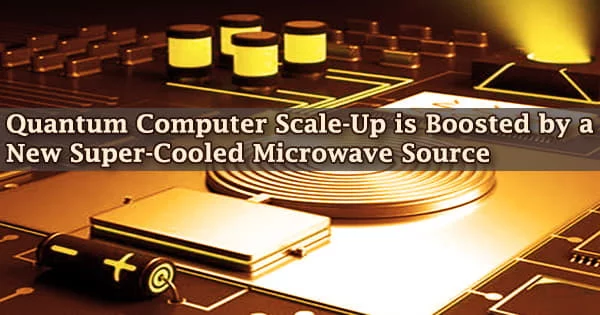Researchers in Finland have devised a circuit that can generate the high-quality microwave signals needed to control quantum computers at temperatures close to absolute zero. This is an important step in bringing the control system closer to the quantum processor, which could allow the processor’s qubit count to skyrocket.
The mechanism used to regulate the qubits in quantum processors is one of the constraints limiting the size of quantum computers. Because quantum processors operate at temperatures close to absolute zero, the control pulses are generally supplied into the cooled environment via broadband cables from ambient temperature.
The number of cables required grows in lockstep with the amount of qubits. This restricts the size of a quantum processor since the freezers that cool the qubits would have to grow in size to house more and more connections while simultaneously working harder to keep them cool, which would be a losing proposition.
A research group led by Aalto University and Finland’s VTT Technical Research Centre has now developed a vital component of the answer to the problem.
“We have built a precise microwave source that works at the same extremely low temperature as the quantum processors, approximately -273 degrees,” says Mikko Möttönen, Professor at Aalto University and VTT Technical Research Centre of Finland, who led the team.
Our device produces one hundred times more power than previous versions, which is enough to control qubits and carry out quantum logic operations. It produces a very precise sine wave, oscillating over a billion times per second. As a result, errors in qubits from the microwave source are very infrequent, which is important when implementing precise quantum logic operations.
Mikko Möttönen
The novel microwave source is a quantum processor-compatible on-chip device. Its size is less than a millimetre, and it could eliminate the requirement for high-frequency control cords to connect different temperatures. It may be possible to employ smaller cryostats while still increasing the amount of qubits in a processor with this low-power, low-temperature microwave source.
“Our device produces one hundred times more power than previous versions, which is enough to control qubits and carry out quantum logic operations,” says Möttönen. “It produces a very precise sine wave, oscillating over a billion times per second. As a result, errors in qubits from the microwave source are very infrequent, which is important when implementing precise quantum logic operations.”
A continuous-wave microwave source, such as the one created by this device, cannot, however, be utilized to operate qubits in its current state. Microwaves must first be formed into pulses. The team is currently working on ways to turn on and off the microwave source quickly.
An efficient, low-noise, low-temperature microwave source, even without a switching mechanism to make pulses, could be beneficial in a variety of quantum technologies, such as quantum sensors.
“In addition to quantum computers and sensors, the microwave source can act as a clock for other electronic devices. It can keep different devices in the same rhythm, allowing them to induce operations for several different qubits at the desired instant of time,” explains Möttönen.
Juha Hassel and colleagues at VTT worked on the theoretical analysis and the original design. Hassel is the head of engineering and development at IQM, a Finnish quantum-computing hardware business, where he began his career at VTT. The gadget was then manufactured at VTT and operated utilizing the OtaNano research infrastructure by postdoctoral researcher Chengyu Yan and his colleagues at Aalto University.
Yan is a China’s Huazhong University of Science and Technology associate professor. The Finnish Quantum Institute (InstituteQ) and the Academy of Finland’s Centre of Excellence in Quantum Technology (QTF) are involved in this project.





